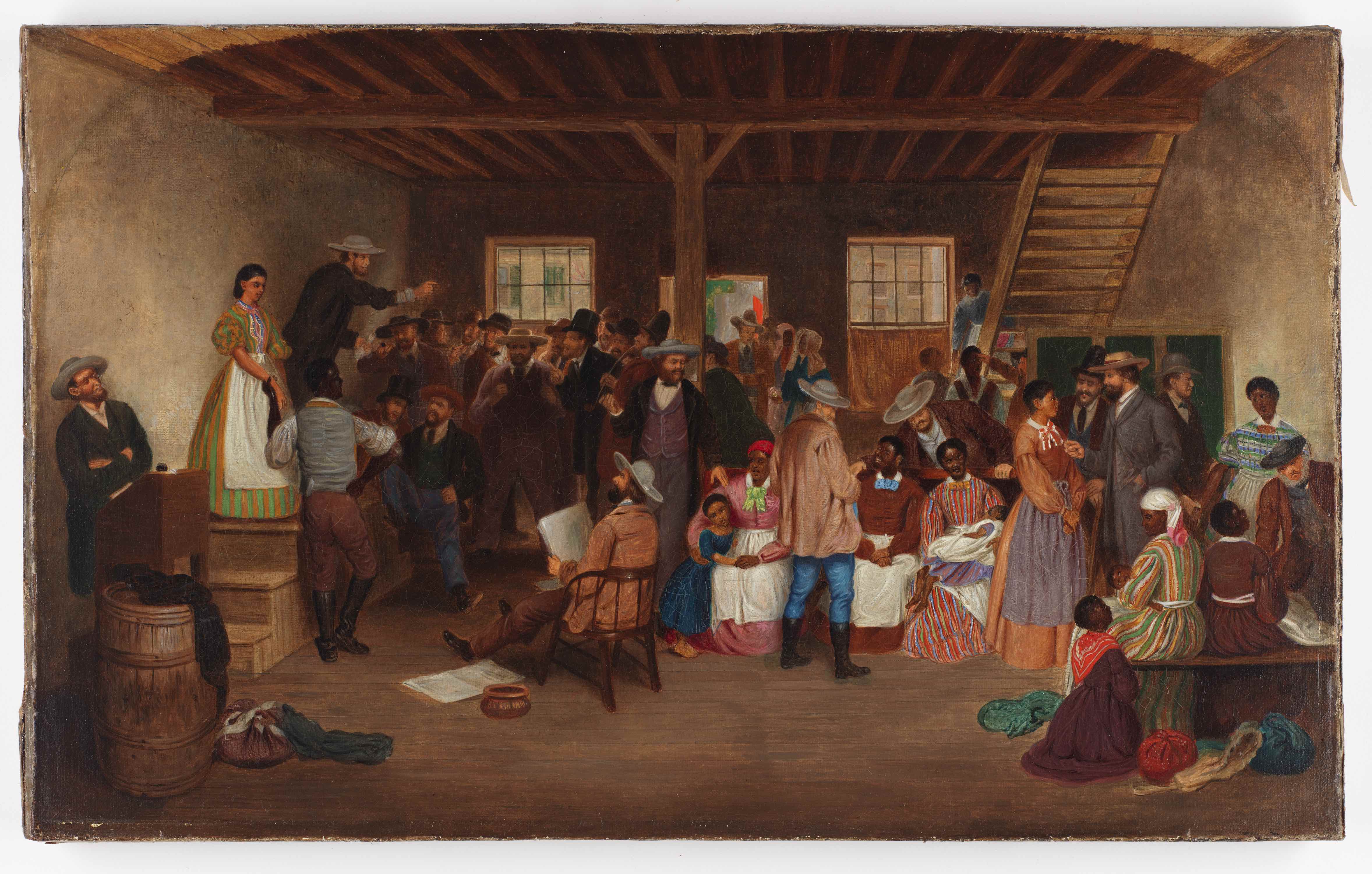Cranston Slave Auction Painting

Slave Auction, Virginia, 1861
Oil Painting by Lefevre james Cranstone
© Virginia Historical Society, Richmond VA.
Like Thomas Jackson, Cranstone was an Englishman who witnessed a slave market in Richmond and later wrote about his horror and disgust in his local newspaper.
(Smaller inside text- mall text below or inside.):
Cranstone was a young painter who was actually touring the United States as a companion of the English author Thackeray. He became obsessed to record the scenes that he witnessed and so took extensive notes and did preliminary sketches while still in Richmond.
After he returned to England he completed this marvelous painting – in our opinion the best illustration of a slave market that exists.
His long, critical letter to his local English Newspaper recording his observations on politics and slavery in USA. In it, he explains in detail features that are clearly illustrated in this painting and probably were similar to those that TJ encountered when he first encountered a slave market about 20 years earlier.
There are many details that may not be obvious at first sight. First it is only the women slaves that are on display in this scene and they are much better dressed than you might expect. This is because each auction was staged like a piece of theater and
‘attractive” slaves were often dressed in fresh clothes and even given jewelry simply to make them look more marketable for the occasion.
Sickeningly this was particularly the case for relatively young women who were less black and could be seen as possible sex partners for the white purchasers. They were expected to be cheerful and look active and obedient. This slice of the slave auction was called the fancy market and the prices paid often exceeded that paid for healthy men.
We know that the men were typically separated from the women prior to the bidding and usually each one was physically inspected in the mouth, on the back and over their torso. Scars on their back were considered as important indicators as to how valuable that particular slave might be. Many scars would be interpreted as an uncooperative individual (rather than a cruel master) and only old scars might indicate that the slave had reformed and was now obedient.
See how Cranstone’s account in his letter to the newspaper provides a powerful explanation for the details in this beautifully crafted painting.
Awaiting the arrival for the auctioneer these goods are freely handled and inspected. Here is every shade of complexion from purest ebony to white, black field hands, yellow beauties, stout fellows; if the buyer wishes bright-eyed, smooth of skin, supple of form, full-chested, clean-limbed creatures, culinary prodigies, deft semptresses (sic), delightful washerwomen, charioteers, unrivaled, the very treasures of commercial Christianity; the only adequate exponents of Virginian wealth and enterprise.
The women are dressed in flaunting gay colours, the men in their best trim. The auctioneer arrives, the sale commences. I see one after another mount the platform— the men first, the women and children last. And they are quickly knocked down, showing a brisk demand in the market.
Whilst the sale is progressing each slave is subjected to a close examination; their arms and hands are felt— teeth inspected—made to walk up and down the room, and to mount and remount the platform. In spite of what is so often said in contradiction to the parting of families, I was an eyewitness that such is the fact; several young children and their mothers being knocked down to different purchasers.
With a long-drawn breath I follow the crowd out, who made their way to another room, where the same scene is enacted. Day after day these scenes are going on in the midst of churches and chapels, and within a stone’s throw of a splendid monument of Washington.
Extract from Cranstone’s letter to his local English newspaper “ Hemel Hempstead Gazette1860-12-29”